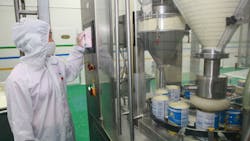Four Tips To Avoid Solids Process Upsets
My experience with most equipment is that it always performs its intended job. If it doesn’t, you selected the wrong equipment.
One of my past employers had a philosophy for executing engineering projects that I still use. Whenever we launch a new product or make a design change, manufacturing must provide process design engineers with two weeks to run the process. This is an opportunity to test various conditions that are often outside the design range. If, in the future, an upset occurs, the engineers have a leg up on what caused the problem. I personally dropped over 7,000 pounds of bad product while starting up a new process and testing the equipment’s limits.
In several of my columns, I’ve suggested tips for specific types of solids-processing equipment, along with examples of what not to do (See “Install Pneumatic Conveyors Correctly." Every process comes with its own set of challenges, but I believe there are four very important areas that are common when working with solids.
1. Good Chemical and Process Data
If you glance over my past columns, the one thing that will stand out is my emphasis on getting good data for the material that you’re processing. You can’t run a crystallization process without a solubility curve. However, you’ll notice that I don’t suggest relying on just one curve, especially with ultra-pure materials. Impurities are a fact of life and can have a big effect on the operations, along with the properties cited in the March 2023 column, "Identify Key Experiments For Solids Scale-Up." In the example given above, I went back and talked to one of the chemists, and she discovered a reaction with an unexpected enantiomer caused the failure. The same watch-out is for blending and storing particles. Flowability and permeability tests usually pay for themselves down the road.
2. Equipment Selection
My experience with most equipment is that it always performs its intended job. If it doesn’t, you selected the wrong equipment. Sometimes, an operator will select the equipment because there is a similar device already on the shop floor. Too often, I hear, “A blender is a blender” or “a centrifuge is a centrifuge.” A small configuration change can make a big difference in performance. I used several examples of minor changes in blender internals or even wall materials that dramatically changed blend quality (See “Beware of Blending Myths"). The next time you see a selection chart for a solids handling category (i.e., dryers), take note of the number of different variations in that category.
3. Training
Don’t get cheap on me now! When you purchase a new piece of equipment, have the supplier send an expert to train your people on how to use it. Even if your pump people have experience with the style used by the new equipment, it may have a special gasket or seal that is used differently. It helps to be involved in the installation to ensure safe access to the new device is documented.
4. Inspections and Maintenance
They go hand in hand, with inspections supplementing routine maintenance. Solids processing operations are difficult to inspect, as the only serviceable components are usually external to the device. However, regular housekeeping inspections (i.e., looking for leaks, noisy operation or excessive hot spots) ensure a safe operating environment and pay for themselves in the future.
One big giveaway of repeated pluggages is finding a large hammer outside near the bottom of a bin. This may indicate the discharge aids need maintenance. Check items such as air filters on dryers, air pressure in baghouses and rotary valve clearances to ensure correct operation. An inspection will highlight areas that you may have missed in the overall maintenance plan. We often lose sight of how important these seemingly minor components of a process are to sustainable operations. As an example, the inspection may show low pressure in a baghouse header that will require a tune-up of the pulse pressure. Optimization of the pulse can save enormous amounts of compressed air.
Being successful as you work with particulate solids requires good physical properties along with carefully selecting the best process equipment. But equipment selection is only half the battle. Make sure you follow up with proper maintenance training for any staff who works with the equipment to optimize operations.
About the Author
Tom Blackwood, Solids Advice columnist
Contributing Editor
Tom Blackwood, a veteran engineer who has dealt extensively with solids over the course of his career, contributes regularly to Chemical Processing and serves as the Solid Advice columnist.

